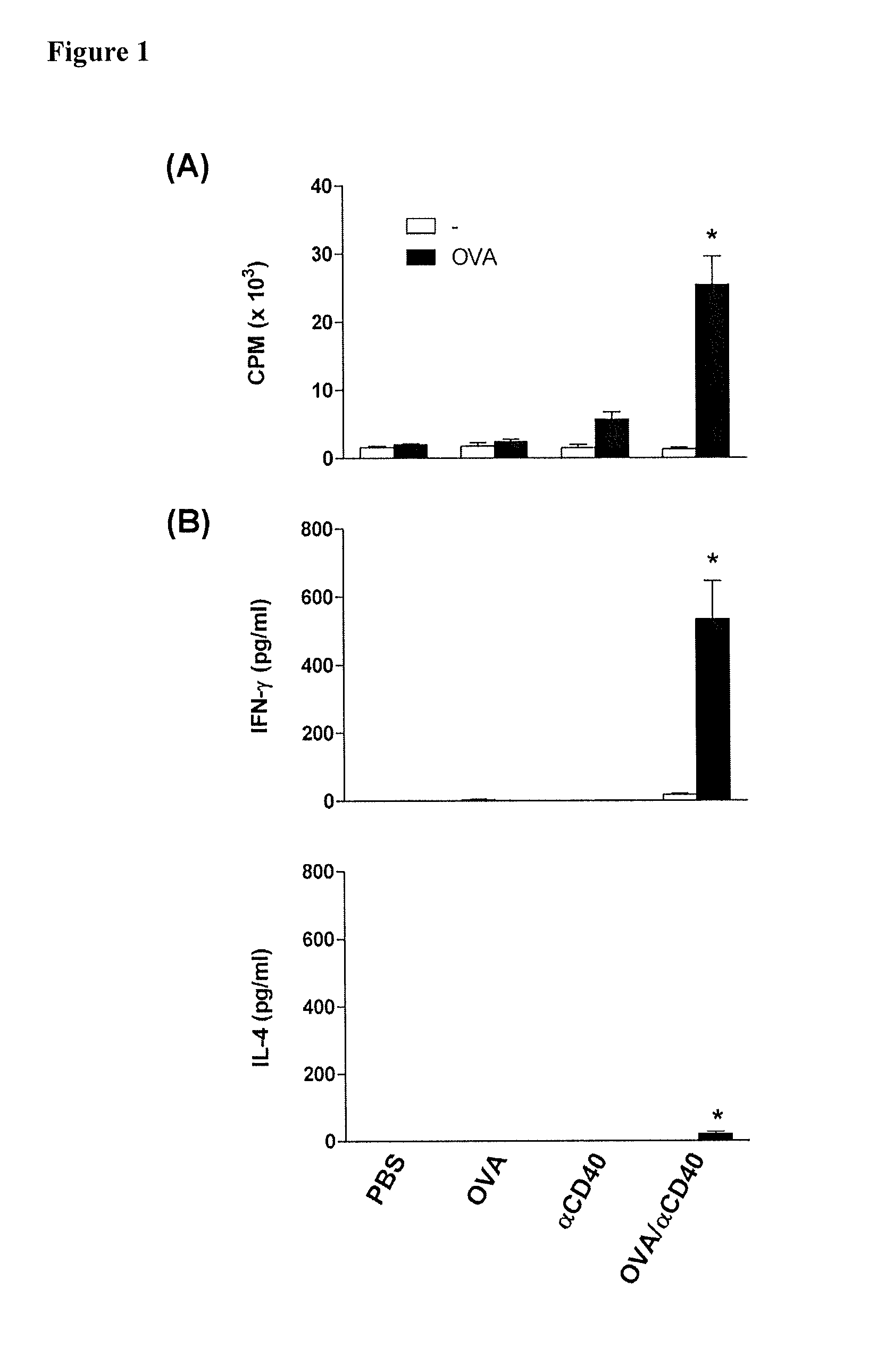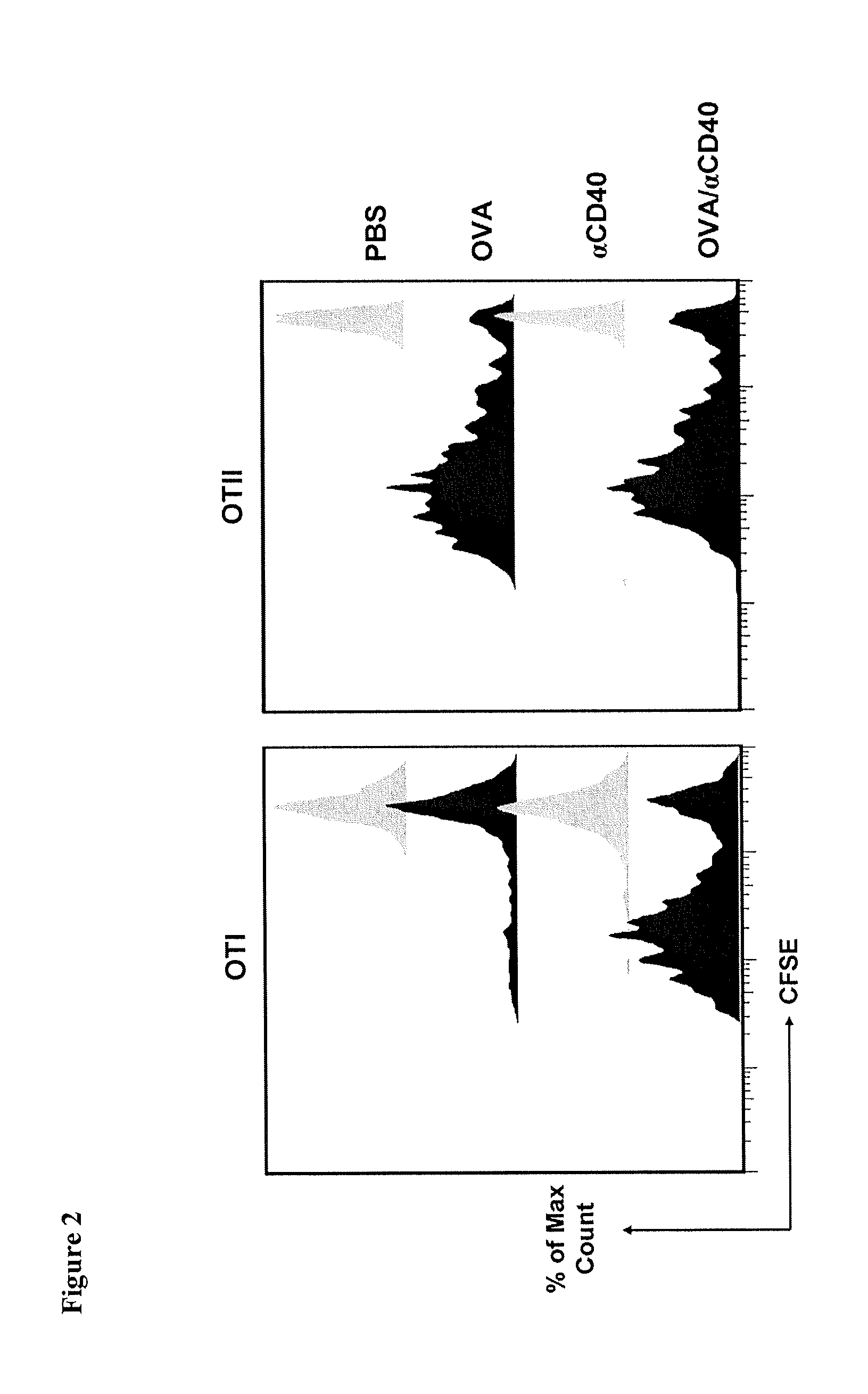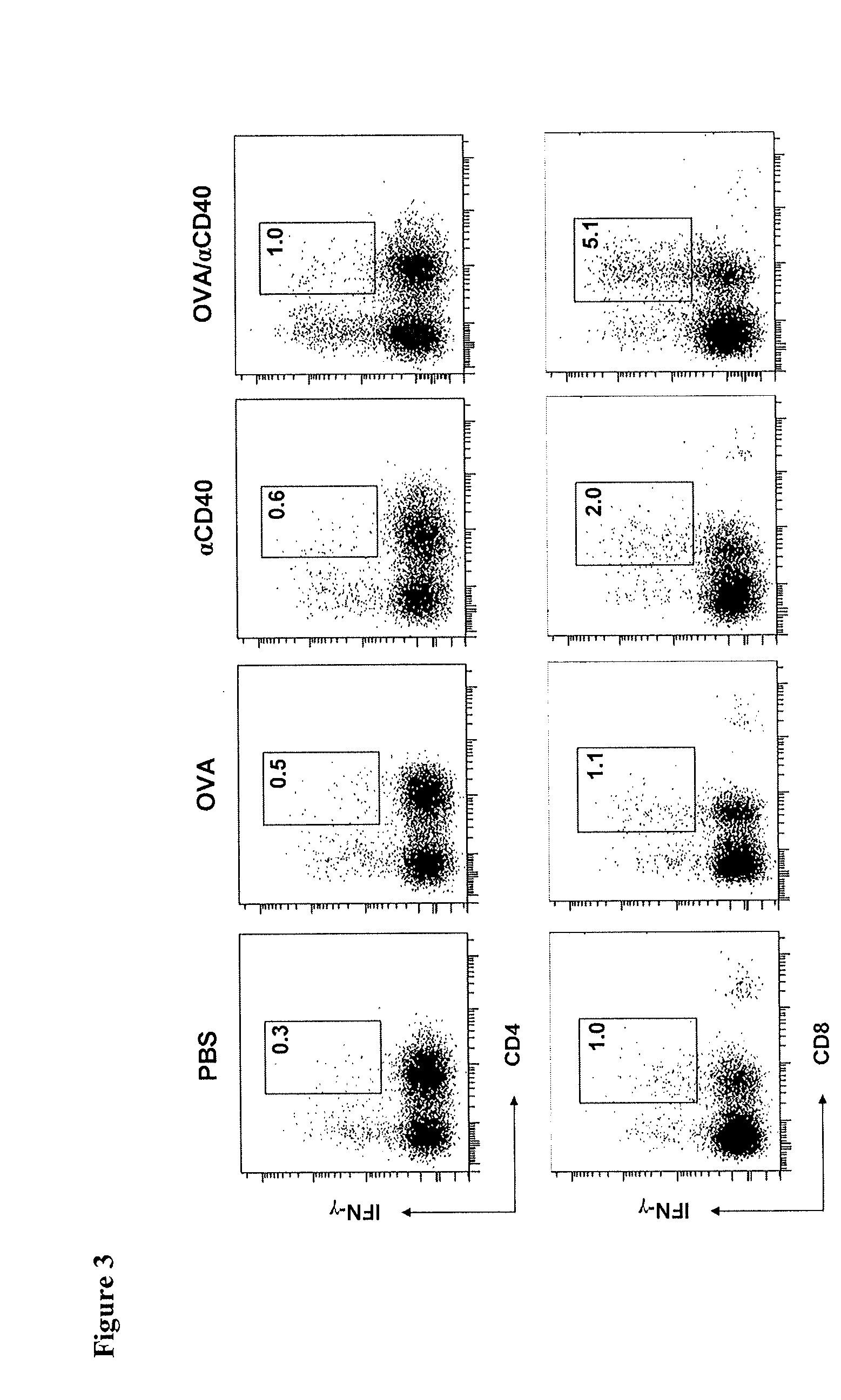Combination for use in the treatment and/or prevention of mastitis
a technology for mastitis and mastitis, applied in the field of mastitis treatment or prevention, can solve the problems of reducing the quantity and quality of milk, mastitis is the most costly disease affecting dairy cattle worldwide, and remains difficult to control efficiently
- Summary
- Abstract
- Description
- Claims
- Application Information
AI Technical Summary
Benefits of technology
Problems solved by technology
Method used
Image
Examples
example i
CD40 Triggering Induces Strong Cytotoxic T Lymphocyte Responses to Heat-Killed Staphylococcus aureus: a New Vaccine Strategy for Staphylococcal Mastitis
Materials and Methods as Employed in the Following
1. Mice
[0139]Wild-type C57BL / 6 and BALB / c mice were purchased from Harland Nederland. OT-II mice (C57BL / 6 background) transgenic for αβ-TCR reactive with the I-Ab-restricted 323-339 peptide of ovalbumin (OVA), and OT-I mice (C57BL / 6 background) transgenic for αβ-TCR reactive with the H-2Kb-restricted 257-264 peptide of OVA, were from the Jackson Laboratory. All mice were housed in our specific pathogen free facility and used at 6-10 week of age, except lactating mice that were used at 14-20 week of age. All experiments were conducted with Institutional Animal Care and Use Committee approval.
2. Bacteria
[0140]S. aureus Newbould 305 (American Type Culture Collection 29740), a mastitis isolate, was the pathogen used. Prior to each experiment, a single colony from a Nutrient (Difco Laborat...
example ii
Generation of an Agonistic Anti-Bovine CD40 Monoclonal Antibody that Induces Maturation of Dendritic Cells In Vitro and Cytotoxic T Lymphocytes Responses in Vivo
Materials and Methods as Employed in the Following
1. Animals
[0168]Wild-type BALB / c mice were purchased from Harlan Nederland. All mice were housed in our specific pathogen free facility and used at 6-10 week of age. Eighteen healthy Holstein heifers were selected from neighbouring farms and housed in our large animal facility. All experiments were conducted with Institutional Animal Care and Use Committee approval.
2. Antibodies and Reagents
[0169]Agonistic rat anti-murine CD40 antibodies (clone 1C10) were purchased from R&D. Agonistic anti-human CD40 antibodies (clone B-B20) were from Abcam. FITC-conjugated anti-FLAG antibodies (clone M2) were from Sigma-Aldrich. Alexa-647 conjugated anti-bovine-interferon-γ (IFN-γ), FITC-conjugated anti-bovine-CD4, RPE-conjugated anti-bovine-CD8, anti-bovine-IL12 (clone CC301 and CC326), and...
example iii
Administration of Agonistic Anti-CD40 Antibody in the Vaccination Murine Mouse Model: Increased Humoral Response to HSKA as Mentioned by Antibody Titers of Anti-HSKA Antibodies
Material and Methods
ELISA Measurements of the Ag-Specific Ig Titers
[0195]Antibodies against HKSA were evaluated by ELISA in microtiter plates coated with 107 CFU of HKSA per well. Diluted sera from immunized mice were incubated on Elisa plates and bound IgG2a and IgG2b were detected using horseradish peroxidase (HRP)-conjugated mouse IgG2a and IgG2b specific antibodies (Southern Biotechnology) followed by incubation with tetramethyl benzidine and measurement by spectrophotometry. Antibody titers were calculated by plotting the serum dilution that gave half-maximal signal. When no signal was detected, we assigned a titer of 2.
Results
[0196]The specific humoral response to HKSA was also measured. As IgG2a and IgG2b are the most representative immunoglobulins of a Th1 type immune response, we mainly focused on the...
PUM
| Property | Measurement | Unit |
|---|---|---|
| body weight | aaaaa | aaaaa |
| body weight | aaaaa | aaaaa |
| body weight | aaaaa | aaaaa |
Abstract
Description
Claims
Application Information
 Login to View More
Login to View More - R&D
- Intellectual Property
- Life Sciences
- Materials
- Tech Scout
- Unparalleled Data Quality
- Higher Quality Content
- 60% Fewer Hallucinations
Browse by: Latest US Patents, China's latest patents, Technical Efficacy Thesaurus, Application Domain, Technology Topic, Popular Technical Reports.
© 2025 PatSnap. All rights reserved.Legal|Privacy policy|Modern Slavery Act Transparency Statement|Sitemap|About US| Contact US: help@patsnap.com



